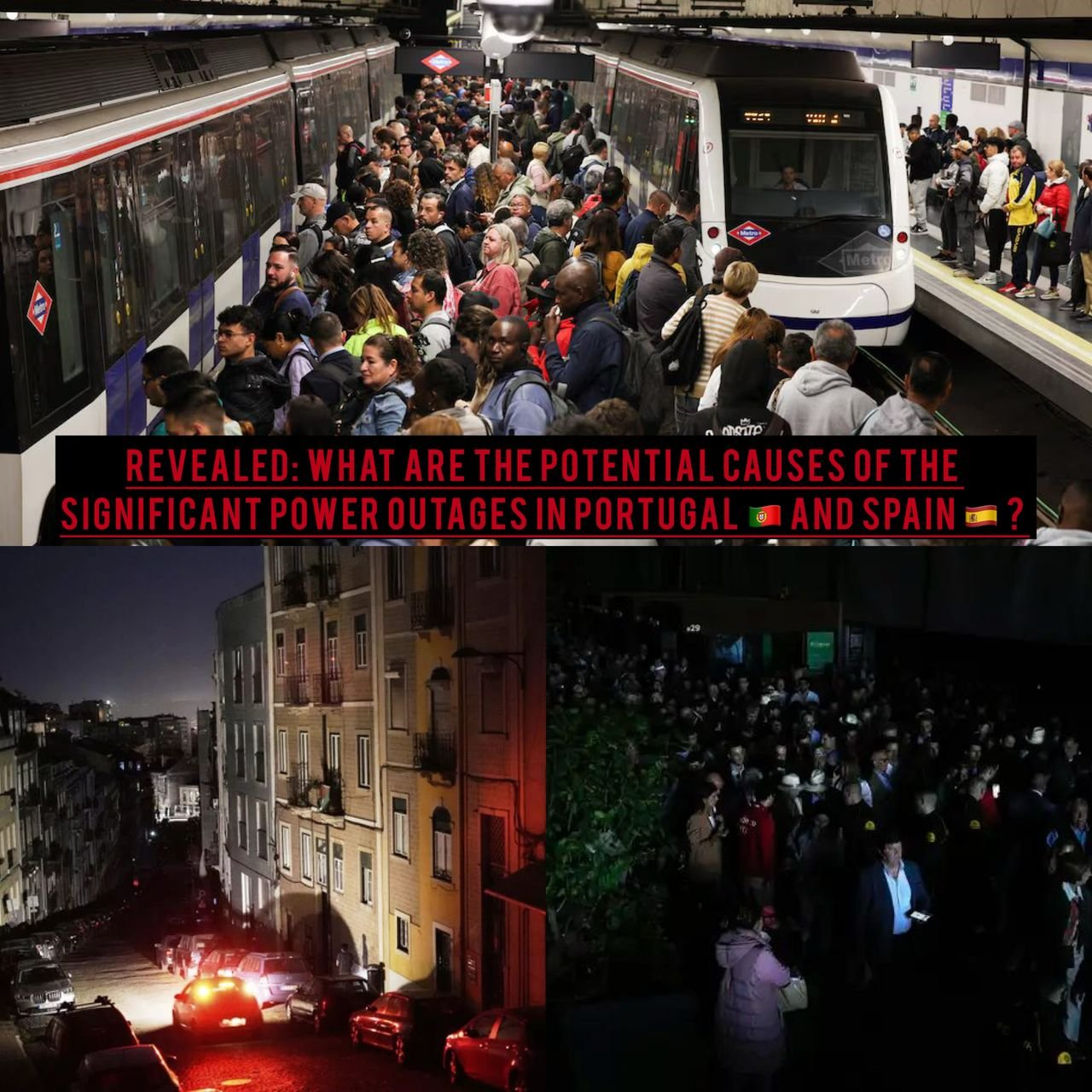A number of scenarios have been proposed by experts as potential explanations for the significant power failure that resulted in the chaos of Spain and Portugal.
On Monday, a significant power outage caused widespread pandemonium throughout the Iberian Peninsula. However, electricity supplies are gradually returning to certain regions of Spain and Portugal.
Throughout the booth countries and portions of France, the disruption resulted in the cessation of subway trains and railways, the interruption of phone service and Internet connections, and the shutdown of ATM machines and traffic lights. There are numerous individuals who are currently confronted with the possibility of experiencing an evening without electricity.
It is uncertain how many individuals have been impacted by the disruption, as the Iberian region is home to approximately 60 million individuals.
Red Electrica, Spain’s national grid operator, announced in a statement that power supplies had been restored to select regions, including Catalonia, Andalucia, the Basque Country, and Castille and Leon, on Monday evening.

The situation was unprecedented, according to Eduardo Prieto, the head of operations at Red Eletrica, who described it as “exceptional and extraordinary” in an interview with the Associated Press. Teresa Ribera, the executive vice president of the European Commission who is responsible for promoting clean energy, described the incident as “one of the most serious episodes recorded in Europe in recent times.”
The specific cause of the outage is still being investigated by authorities; however, experts have proposed several potential scenarios as to why it may have occurred.
It is important to acknowledge, however, that there is currently insufficient evidence to definitively determine the errors that occurred.
What is a rare atmospheric phenomenon?
The outage may have been the consequence of a rare phenomenon known as “induced atmosphere vibration,” which resulted in “anomalous oscillations” in the high-voltage lines of Spain’s energy infrastructure, according to reports that circulated on Monday.
REN, a Portuguese energy company, reportedly informed the BBC on Monday afternoon that the oscillations resulted in synchronization failures between the electrical systems, which in turn caused successive disturbances across the interconnected European networks.
Later, these assertions were refuted by REN in the Portuguese media. What are these vibrations, and what impact would they have had on the power grid of the region?
Solomon Brown, a professor of process and energy systems at the University of Sheffield in the United Kingdom, stated that a “induced atmospheric vibration” could be compared to “inducing a small shift in the local electromagnetic field.”
He stated to Euronews Next that this would have a similar effect as, for example, a solar event, and could result in imbalances in electrical power fluxes that would require regulation.
He continued, the power distributor could employ a variety of measures to regulate this, such as requesting that power sources either increase or decrease the quantity of power they supply.
In situations where the disturbance is excessive, operators may elect to close down the grid and gradually restore it, Brown continued. He also noted that the process of re-energizing the grid is “difficult,” and that it may require several hours for power to be restored to all areas.
Brown, even though he is not an authority on the Spanish-Portuguese grid, is of the opinion that the two are “interconnected” via high-voltage cables that are synchronized to form a unified power network.
He stated, “This is a common occurrence in Europe and aids in the establishment of a unified power network that can collaborate. However, during periods of stress, it must be managed separately and reassembled.”
Leave a Reply